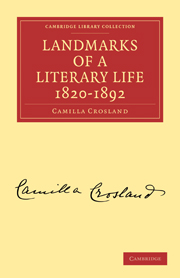Summary
Surely the days of the Regency and the early years of George the Fourth's reign—seen with the “enchantment” which “distance lends”—form a very suggestive period for some great novelist to treat. In “Vanity Fair” Thackeray broke the ground, but I think only superficially. He was a little too near the period, and I own that to me this great work is marred by the unchivalrous act of choosing a struggling, penniless girl, for the “villain” of his story. There are bad women enough in the world, and it is fit their errors and crimes should be shown up for the edification of their sex; but probably no class, as a class, exemplifies nobler qualities than poor but educated gentlewomen, who have in one way or another to maintain themselves, and often indeed to be the mainstay of others. For years after the publication of “Vanity Fair” it was enough for a struggling woman to show shrewdness and a little more than ordinary prudence for her to be sneered at as a Becky Sharpe. It maybe that “Esmond” atones for the flaw in “Vanity Fair,” but it needed as fine a work to do so.
This is a digression, I confess. I am endeavouring to depict the London life of the cultivated middle classes as I remember it to have been from my early childhood.
- Type
- Chapter
- Information
- Landmarks of a Literary Life 1820–1892 , pp. 16 - 30Publisher: Cambridge University PressPrint publication year: 2010First published in: 1893

